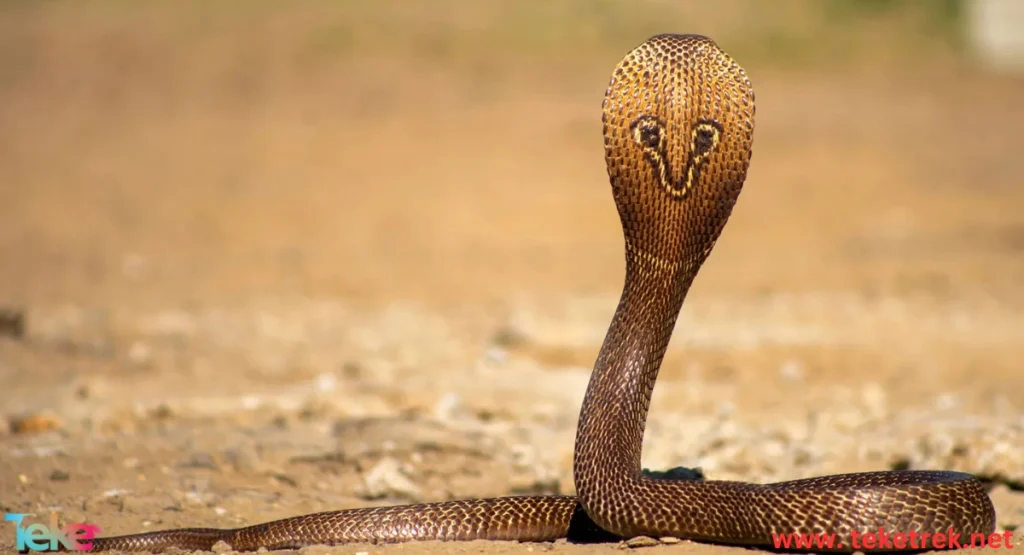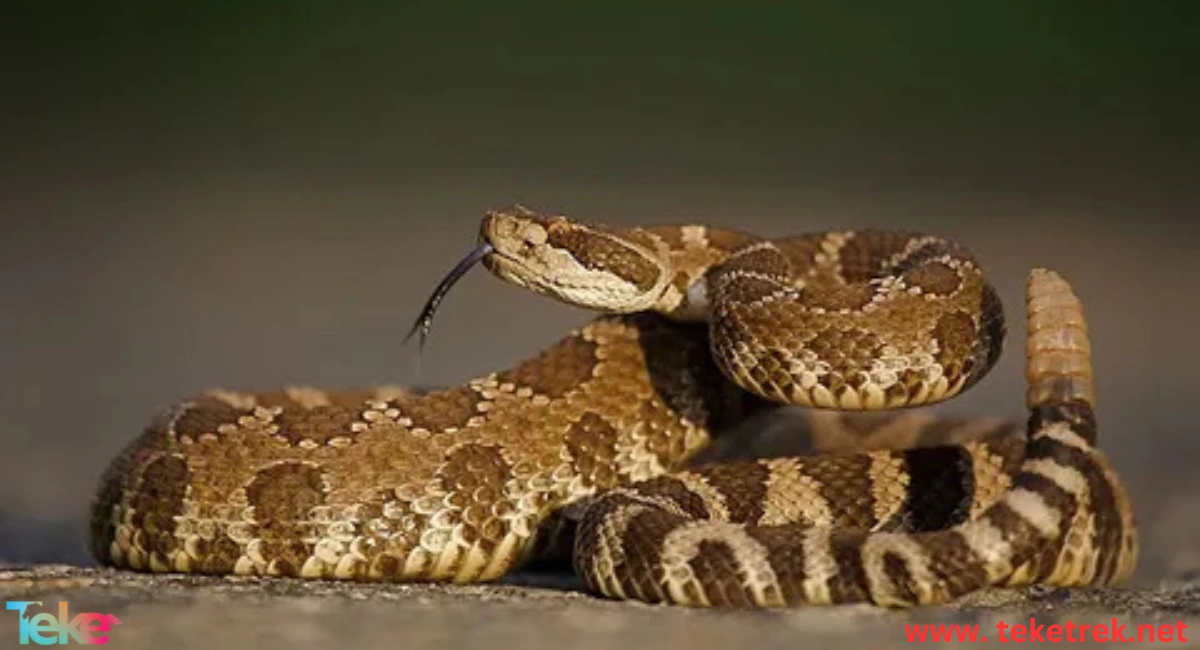Venomous snakes are among the most dangerous reptiles that pose a threat to both humans and animals. They evoke fear and terror due to their ability to release venom rapidly from their mouths. A snake bite is one of the most dangerous and severe bites one can experience. However, despite their danger, venomous snakes play a vital role in maintaining ecological balance، Here are the details in this article from teketrek.
The importance of venomous snakes in the ecosystem
Their significance in the ecosystem includes:
- Consuming toxic plants and feeding on them.
- Cleaning fields and forests of harmful insects and rodents, thereby preventing pollution and the spread of diseases.
- Producing venom used in pharmaceutical industries for drug manufacturing.
The Most Famous Venomous Snakes in Forests
Venomous snakes are found worldwide, particularly in forests, mountains, and residential areas. Some of the most well-known venomous snakes include:
Cobra
Also known as the “King Cobra,” this species is one of the most dangerous snakes due to its potent venom and strong bite. It is also one of the largest snakes in the world. Cobras are found in South Asia, extending to the islands of Southeast Asia, and parts of South Africa.
Read: Snake Shedding

Rattlesnake
Known as the “Rattlesnake,” this species is one of the most dangerous venomous snakes on Earth. It is considered a predatory reptile that attacks and feeds on animals such as insects, rodents, birds, fish, and smaller snakes. The rattlesnake gets its name from the rattle-like structure at the end of its tail, which produces a loud sound when the snake senses danger. This species is commonly found in the southwestern United States and northern Mexico.
Black Mamba
One of the most dangerous snakes in the world, the black mamba delivers multiple bites to its prey rather than just one. It injects venom into its prey repeatedly until it is certain of its kill. It is also the fastest snake in the world, reaching speeds of up to 19 km/h (12 mph). This snake inhabits forests, rocky slopes, grasslands, riverbanks, and swamps in South and East Africa.
Everything you need to know about clownfish: their colors, diet, and social behaviors
How to Identify Venomous Snakes
Venomous snakes can be easily distinguished from non-venomous ones through several key differences:
- Behavior: Venomous snakes are aggressive and attack quickly, whereas non-venomous snakes are generally calm and non-aggressive.
- Nose Shape: Venomous snakes have pointed noses, while non-venomous ones have rounded noses.
- Eyes: Venomous snakes have slit-like pupils resembling cat eyes, whereas non-venomous snakes have round pupils.
- Tail: Venomous snakes have a single row of scales on their tails, whereas non-venomous snakes have two rows.
- Head Shape: Venomous snakes have triangular-shaped heads, while non-venomous snakes have rounded heads.
Warning Signs When Encountering a Venomous Snake
- Keep a safe distance from venomous snakes and avoid approaching them.
- Contact a professional snake removal service immediately.
- Never attempt to handle or provoke a venomous snake, as it can release venom rapidly.
- Maintain a clean home and garden, removing food scraps and thick vegetation to prevent snakes from being attracted to the area.
First Aid for Snake Bites
A snake bite is one of the most severe and dangerous injuries, significantly more harmful than insect bites, as it can be fatal. Here are some essential first aid steps:
Immediate Actions for a Snake Bite
- Call for emergency medical help immediately and keep the victim calm to prevent venom from spreading quickly.
- Try to remember the snake’s shape and color to help medical professionals provide the correct treatment.
- Wash the bite wound with soap and water promptly.
- Avoid sucking the venom out with your mouth or making any cuts around the bite area.
- Do not apply ice to the bite site.
- Cover the wound with a loose bandage.
- Keep the victim lying down and relaxed.
- Remove any rings, bracelets, or tight clothing, as swelling will occur and make removal difficult later.
When to See a Doctor?
After performing first aid, seek medical attention immediately. Delaying treatment can lead to fatal consequences, as venom spreads throughout the body quickly. A specialized doctor will administer the necessary antidote and medications to stop the venom from spreading.
Read: raising snakes at home

Frequently Asked Questions
What is the most venomous snake in the rainforest?
The Amazonian Coral Snake, also known as the South American Coral Snake, is the most venomous snake in the Amazon rainforest.
What is the most venomous snake on land?
The Black Mamba is the most venomous snake on land. A single bite from this snake can inject up to 400 milligrams of venom. It is found in South and East Africa.
Can snakes be found in forests?
Yes, snakes inhabit various forested regions. Reticulated pythons are found in Southeast Asia, particularly in grasslands and tropical rainforests. Non-venomous snakes thrive in the pristine forests of Myanmar, while some snakes even live in urban waterways in Singapore, Indonesia, and Malaysia.
What are the four most venomous snakes?
The four most venomous snakes include:
- Eastern Diamondback Rattlesnake – found in the United States.
- Desert Black Snake – found in Egypt.
- Cobra – found in India.
- Gaboon Viper – found in the African sub-Saharan region.
Conclusion
Venomous snakes are among the most dangerous reptiles, posing serious risks to humans and animals. Awareness and education about venomous snakes are essential in both urban and rural environments. Proper knowledge about snake species, their behavior, and how to deal with their bites is crucial. Additionally, preventive measures should be taken if snakes are frequently spotted near homes or workplaces. Sealing cracks and openings in buildings and keeping the surroundings clean from thick vegetation can help reduce the risk of snake encounters.





